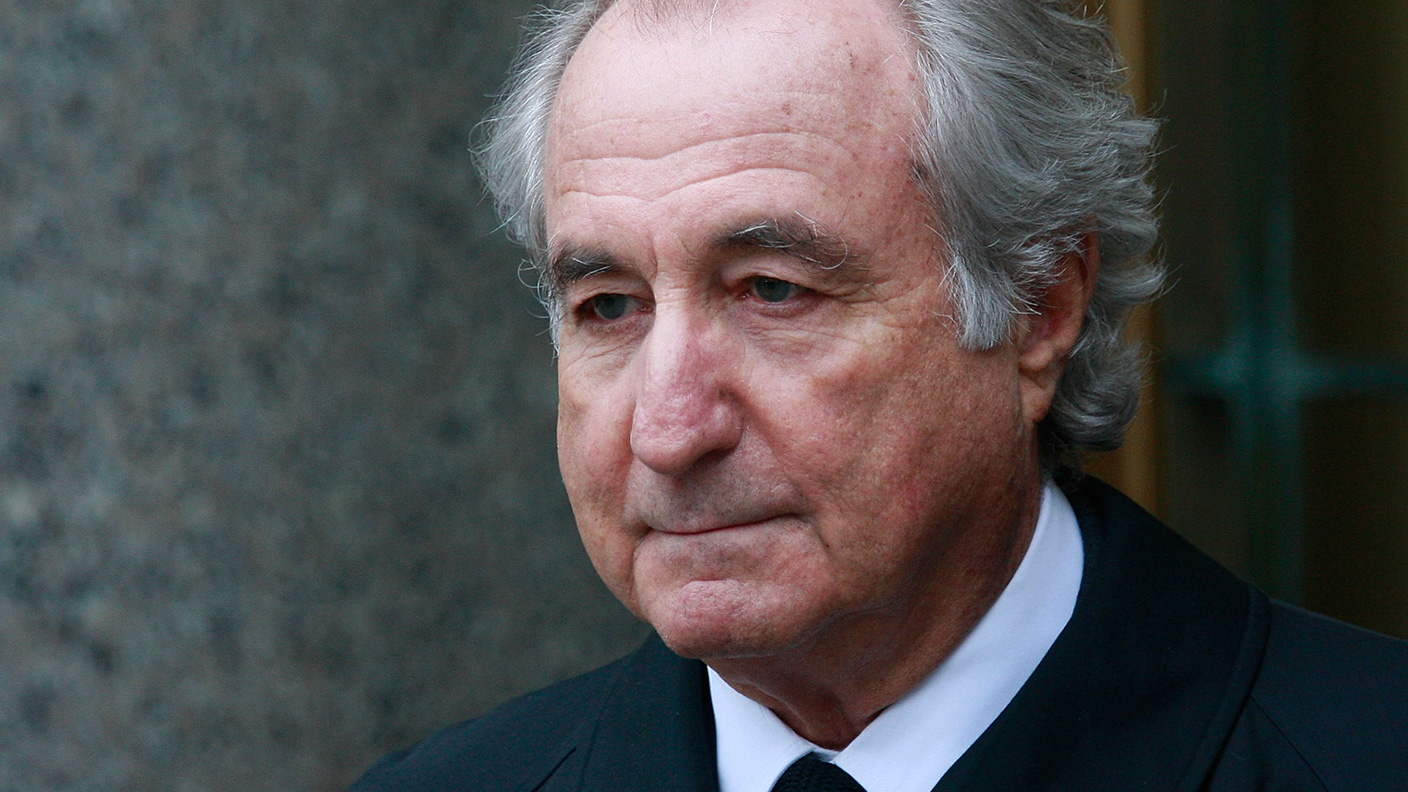World's biggest fraudster Bernie Madoff has died – what was his scam?
Bernie Madoff, perpetrator of the world's biggest Ponzi scheme, has died in prison at the age of 82. Matthew Partridge looks at his massive fraud scheme.


Bernie Madoff got his start in finance as a 22-year-old in 1960 when he set up a brokerage specialising in penny stocks with the assistance of his father-in-law. The firm acted as a market maker and over the years Madoff Securities would play a large role in the development of the electronic exchange Nasdaq. Madoff was briefly considered as a potential chairman of the Securities & Exchange Commission, the US regulator. From the 1980s onwards, his firm ran a large investment management division based on buying and selling options known as "split-strike conversion" instruments, which promised returns similar to that from the stockmarket, but with less volatility.
How did they work?
Madoff initially claimed his scheme was based on a legitimate strategy (others dispute this). But he admits that by the early 1990s he was running a Ponzi scheme, paying existing investors with money he raised from new ones. To maintain the illusion of profits, he shuffled money between various accounts and used a tiny accounting firm to perform the fund's annual audit. He refused to outline his exact strategy in detail, and barred investors that he felt were too inquisitive.
What happened next?
As the promised returns from Madoff's scam were much smaller than is typical with Ponzi schemes, his fund was able to survive for longer, helped by the fact that Madoff targeted long-term investors, such as charities. Ironically, it was this very stability that led to his downfall during the 2008 financial crisis, as investors withdrew money from his fund to cover losses elsewhere. In December, with only $200m left to cover $64bn worth of fictitious client assets, he confessed to his sons, who turned him into the authorities.
MoneyWeek
Subscribe to MoneyWeek today and get your first six magazine issues absolutely FREE

Sign up to Money Morning
Don't miss the latest investment and personal finances news, market analysis, plus money-saving tips with our free twice-daily newsletter
Don't miss the latest investment and personal finances news, market analysis, plus money-saving tips with our free twice-daily newsletter
Lessons for investors
The seizure of Madoff's assets as well as various lawsuits have resulted in the return of some of the cash investors lost in the scam. As of February 2018, the two funds set up to compensate investors had paid out more than $12bn, with nearly $5bn in reserve, although $25-$30bn will be needed to cover total losses, says The Economist. Compensation has been limited to the amount originally invested and many of those who made money were forced to surrender some or all of their profits. So, while it's a good idea to withdraw money you suspect might be tied up in a scam, place it in a separate account in case you have to repay it.
Get the latest financial news, insights and expert analysis from our award-winning MoneyWeek team, to help you understand what really matters when it comes to your finances.

-
 How cancelling unused direct debits could boost your pension by £37,000
How cancelling unused direct debits could boost your pension by £37,000A new year refresh of your spending could save you money and help boost your pension pot.
-
 NS&I cuts interest rates on 8 savings accounts
NS&I cuts interest rates on 8 savings accountsNS&I will now offer less attractive interest rates for customers wishing to lock their savings away to grow for one, two, three or five years.
-
 Halifax: House price slump continues as prices slide for the sixth consecutive month
Halifax: House price slump continues as prices slide for the sixth consecutive monthUK house prices fell again in September as buyers returned, but the slowdown was not as fast as anticipated, latest Halifax data shows. Where are house prices falling the most?
-
 Rents hit a record high - but is the opportunity for buy-to-let investors still strong?
Rents hit a record high - but is the opportunity for buy-to-let investors still strong?UK rent prices have hit a record high with the average hitting over £1,200 a month says Rightmove. Are there still opportunities in buy-to-let?
-
 Pension savers turn to gold investments
Pension savers turn to gold investmentsInvestors are racing to buy gold to protect their pensions from a stock market correction and high inflation, experts say
-
 Where to find the best returns from student accommodation
Where to find the best returns from student accommodationStudent accommodation can be a lucrative investment if you know where to look.
-
 The world’s best bargain stocks
The world’s best bargain stocksSearching for bargain stocks with Alec Cutler of the Orbis Global Balanced Fund, who tells Andrew Van Sickle which sectors are being overlooked.
-
 Revealed: the cheapest cities to own a home in Britain
Revealed: the cheapest cities to own a home in BritainNew research reveals the cheapest cities to own a home, taking account of mortgage payments, utility bills and council tax
-
 UK recession: How to protect your portfolio
UK recession: How to protect your portfolioAs the UK recession is confirmed, we look at ways to protect your wealth.
-
 Buy-to-let returns fall 59% amid higher mortgage rates
Buy-to-let returns fall 59% amid higher mortgage ratesBuy-to-let returns are slumping as the cost of borrowing spirals.